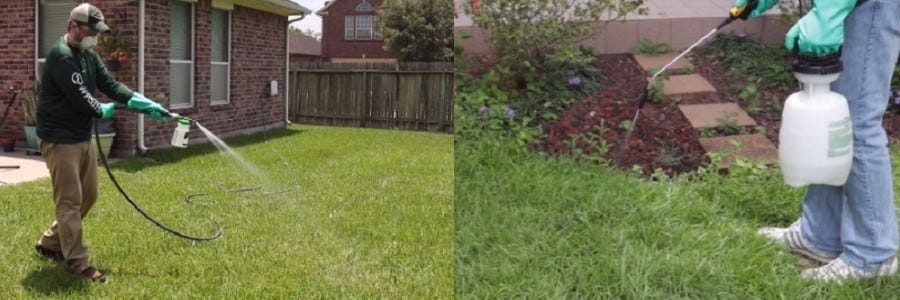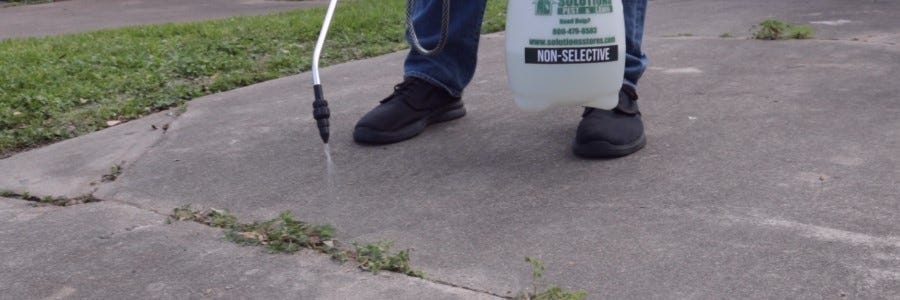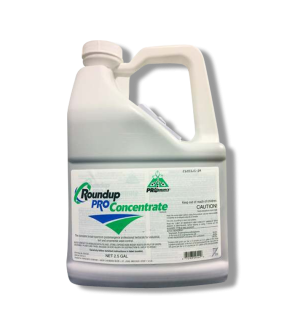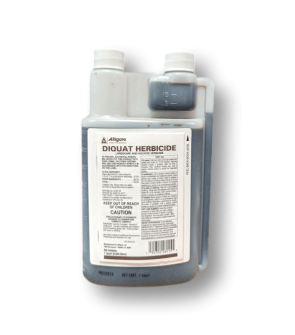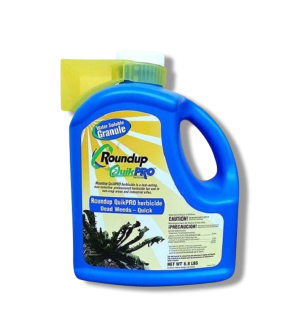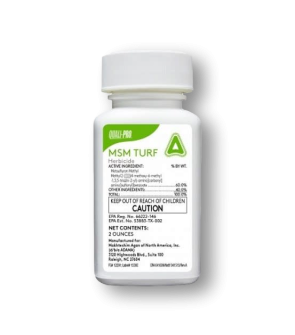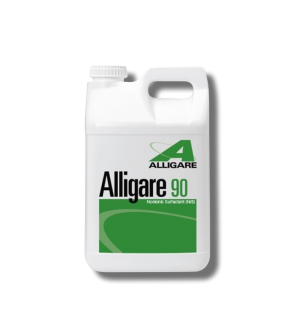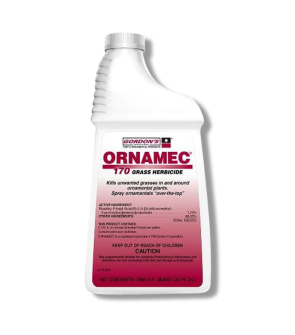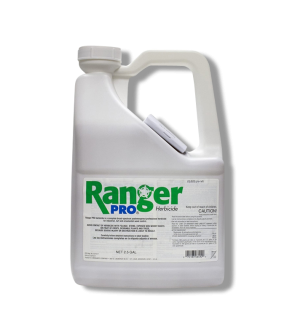Gain access to personalized product screening, the best pricing, rewards, and more!
Most Effective Products
DIY Lawn Care: How To Get Rid of Weeds and Landscape Issues
Nothing beats the feeling of having a beautiful, lush, and vibrant lawn that is the envy of the neighborhood. Unfortunately, a lawn doesn’t become beautiful by itself; you must invest time and energy into making it outstanding and address issues that may creep up, like stubborn invasive weeds and pests.
Landscape issues can vary in severity—from minor weed invasions that ruin your lawn's appearance to harmful diseases or plant-eating insects that damage or kill your desired plant life. Whatever the case, if you don’t take action, the problem will only worsen.
Ensuring your lawn, garden, aquatic area, or landscape is healthy and weed-free doesn’t have to be difficult. We believe you can conduct a professional-quality treatment of your lawn and garden, which can effectively eliminate invasive weeds and pests by following our expertly compiled guides and using our high-quality lawn care products.
Identification

The most important step to eliminating an invasive problem on your landscape is first identifying the invasive species. Identifying the weeds or pests will help determine the best treatment approach and what professional lawn care products would be ideal to address the issue.
Weeds are broken down into broadleaf and grassy types; each type has different lawn care products that control them. To determine what weed you are dealing with, look at the leaf type. If it has a wide stem with visible veins, it is most likely a broadleaf weed. If it is thin and does not have visible veins, then you can be sure it is a grassy weed.
Controlling broadleaf weeds is much easier than grassy weeds because most broadleaf herbicides will not damage turf. In contrast, grassy weed herbicides must be carefully applied so they don't kill your lawn type. Use our subcategory guide to figure out exactly what type of weeds you have.
Inspection
Once you know the problem weed you are dealing with, you need to carry out a careful inspection of your property to determine where the invasive issue is concentrated and determine why it crept up in the first place.
Weeds, pests, and landscaping diseases can appear on land or in aquatic areas, agricultural settings, commercial landscapes, or residential areas. All these areas may not necessarily have the same approach.
We have various detailed DIY guides and tutorials on how to perform a proper inspection, depending on your landscape setting and outdoor pest problem. We will also be happy to help over the phone, via email, or live chat.
Treatment
A weed-free lawn can be achieved with the scheduled and routine use of pre-and post-emergent herbicides, along with a proper fertilization schedule. A healthy lawn will help to keep weeds from propagating and fill in bare spots where they will find the opportunity to grow.
Before handling any herbicide chemical, we stress the importance of keeping yourself safe with personal protective equipment. The bare minimum should be gloves, goggles, and long-sleeve clothing. Check the product label of your herbicide for specifics.
Step 1: Apply Pre-Emergents
The annual use of barricade pre-emergent in the fall and springtime is recommended because it can prevent weed seed germination. The application timing depends upon the country's area and soil temperatures that influence seed germination.
Barricade essentially acts as a birth control agent and needs to be applied before the seed germinates. Weeds begin germinating when soil temperatures are around 55 degrees. A soil thermometer makes it easy to check your soil's temperature.
Because barricade is a granular herbicide, you will need a spreader to apply. We like the plantmates scatterbox because it has a simple design, and its hopper is usually large enough to be used in most residential lawns and average-sized flower beds. A push spreader might be better if you treat a large turf area.
First, read the label for the required application rate because the rate can vary depending on which weed(s) you are trying to prevent. Pour the required amount into your spreader, then evenly spread the granules over the desired area. Water the granules down about 0.5 to 2 inches into the soil for more effective control.
Step 2: Apply Post-Emergents
We recommend using selective and non-selective herbicides for post-emergent weeds, like msm turf herbicide and eraser. Mixing in a surfactant like Nanotek with your herbicide is also a good idea. Nanotek Surfactant is a non-ionic surfactant that allows the herbicide to stick to and spread over the weed leaf surface, aiding in absorption.
MSM Turf Herbicide
MSM Turf Herbicide is a dry flowable herbicide with a broad label. Because it is a selective herbicide, it will only target and kill the weeds listed on its label. With msm turf herbicide herbicide, you would be able to treat your entire turf area without damaging the grass. It can treat up to 43,560 square feet (1 acre).
To use msm turf herbicide, open the product and pour the chemical into either a 1 to 3-gallon pump sprayer. For a pump sprayer, fill the sprayer with 0.025 to 0.05 fl. oz of msm turf herbicide per 1 gallon of water. Secure the lid to your sprayer, and agitate the spray mixture until, even then, spray over your turf. Keep all people and pets off the treated area until dry.
Eraser
Eraser is an effective and economical non-selective herbicide. Because it is non-selective, the eraser will target and kill any vegetation it comes into contact with. It is recommended for weed control in driveway and walkway cracks, around paths, or anywhere else that needs vegetation control.
Mix the eraser following labeled directions in a pump sprayer and spray the weeds you are trying to control. Eraser has no soil activity, meaning it will not be absorbed into the soil and attack vegetation at its roots. The spray must come into contact with the weeds to be most effective.
Pro Tip: When using both selective and non-selective herbicides, it is a good idea to use separate sprayers and mark which sprayer was used with each herbicide. This will help you avoid cross-contamination. So, use one sprayer for selective herbicides and one for non-selective. This goes a long way in protecting your desired plants.
Prevention
After successfully eliminating your problem weed from your lawn, you still need to ensure that the problem or any other potential invaders stay out of your yard.
Aside from regularly caring for your lawn through proper mowing, watering, and cultural practices, we have helpful products such as fertilizers, pre-emergent herbicides, and other helpful lawn care products you can use, as well as tips from our experienced experts.
Key Takeaways
Why is Lawn Care Important?
- Many kinds of unwanted weeds, pests, and problems can arise on your lawn. Identifying which weed you have exactly before proceeding with treatment is crucial.
- Education and the proper lawn care products and equipment are key to successful lawn care and weed control.
What Lawn Care Products Work Best?
- Some of our top-recommended lawn care products include nitrophenol barricade for pre-emergent weed control and eraser or msm turf herbicide for post-emergent control.
- Browse our lawn care subcategories to find your specific issue and get the right expert advice and products to address your problem. Our guides provide you with knowledge and confidence to successfully eliminate the weed problem the DIY way.
-
Q:Do you have a recommendation for a herbicide that kills Goose Grass in a St. Augustine lawn?5/30/25
-
Q:What do you recommend to kill nutsedge?7/10/24A:Sedgehammer is a good, popular product for controlling nutsedge.
Colin
8/7/24 -
Q:I have both broadleaf and grassy leaf weeds. What can I use to kill both kinds of weed?5/16/24A:A product like Celsius WG removes up to 120 species of annual and broadleaf perennial weeds and grasses,
Colin Travis
6/7/24










